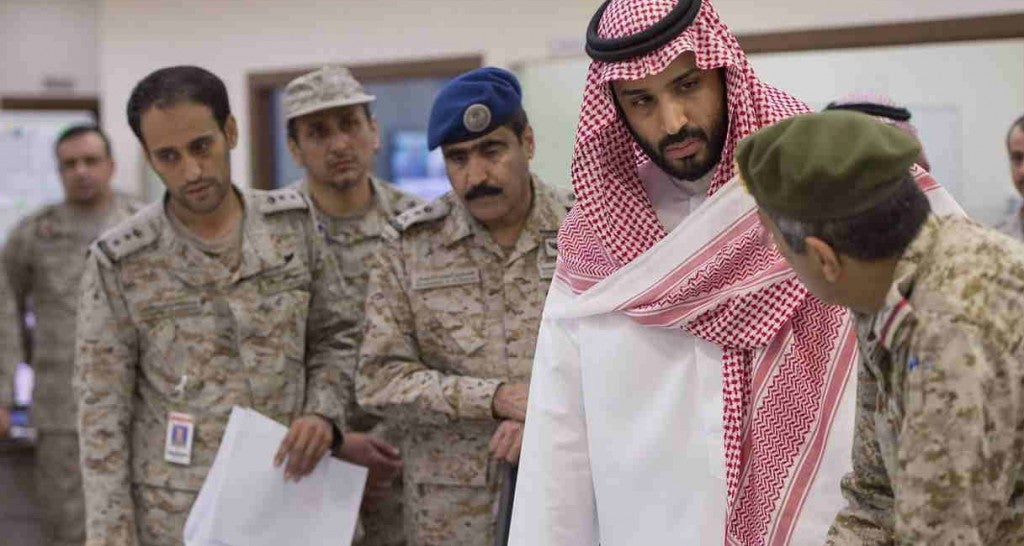While the United States moved out of Yemen last week, this week a Saudi Arabia-led coalition of a reported 10 mostly Arab states moved into Yemen with airstrikes aimed at the continuing chaos there.
The immediate—but not the only—target of the coalition air campaign is the Houthi rebels who recently swept out of northern Yemen, captured the capital, Sanaa, and are moving to push the recognized Yemeni government into the sea in the south.
While the conflict is currently an air campaign, seemingly designed to punish the aggressors, slow their advance and perhaps push them back to the negotiating table, an escalation involving coalition ground troops is possible.
Indeed, in a media gaggle in Washington, D.C., the Saudi ambassador to the United States stated the coalition was ready to do “whatever it takes” to protect the government of Yemeni President Abed Raboo Mansour Hadi.
But while the direct target of the Saudi-led coalition is the Houthis, the indirect target is elsewhere. The (mostly) Sunni Arab intervention into Yemen is about Shia Persian Iran—1,500 miles away.
As we know, the Iran-backed (Shia) Houthis are taking it to the Saudi-supported (Sunni) Yemeni central government. The rebels may seize the city of Aden as well, Hadi’s displaced capital, possibly turning Yemen over to an ally of Iran.
While Tehran’s ties with the Houthi are murky, the rebels will need outside support if they take over the country and could deepen relations with the Iranians. In other words, an Iranian satellite state on the Saudi southern border is possible.
Since Riyadh (and others) see Tehran as not only ambitious in the Middle East and the Muslim world but as ascendant in the region (e.g., Iraq and Syria), expansion into Yemen spells “trouble.”
If Yemen becomes a client state of Iran, Tehran could send the Islamic Revolutionary Guard Corps, intelligence and security forces there to assist the Houthis and advance its interests.
Iran’s naval forces could make port calls or even be stationed in Yemen, in close proximity to the Red Sea/Suez Canal, the Gulf of Aden, and the Arabian Sea.
Equally troubling, Iran, with the largest ballistic missile force in the Middle East, could also deploy these powerful military assets to Yemen, threatening regional land and sea targets and transit lanes.
Essentially, the Arabs and their partners here see the potential for plenty of Persian perfidy in Yemen.
The coalition is, of course, worried about the Islamic State and al-Qaeda in the Arabian Peninsula in Yemen, in light of the death and destruction they’re causing elsewhere, but? considering the threat felt from a major power like Iran, it’s likely secondary.
One can’t also help but sense the coalition feels a need to deal with Iran in Yemen because of declining levels of U.S. regional engagement, a possible warming between Washington and Tehran over a nuclear deal and increasing Iranian influence in Syria and Iraq.
One thing is clear though: Yemen isn’t only a terrorism tinderbox, it’s become a geopolitical one, too.
Originally published in the Boston Herald
